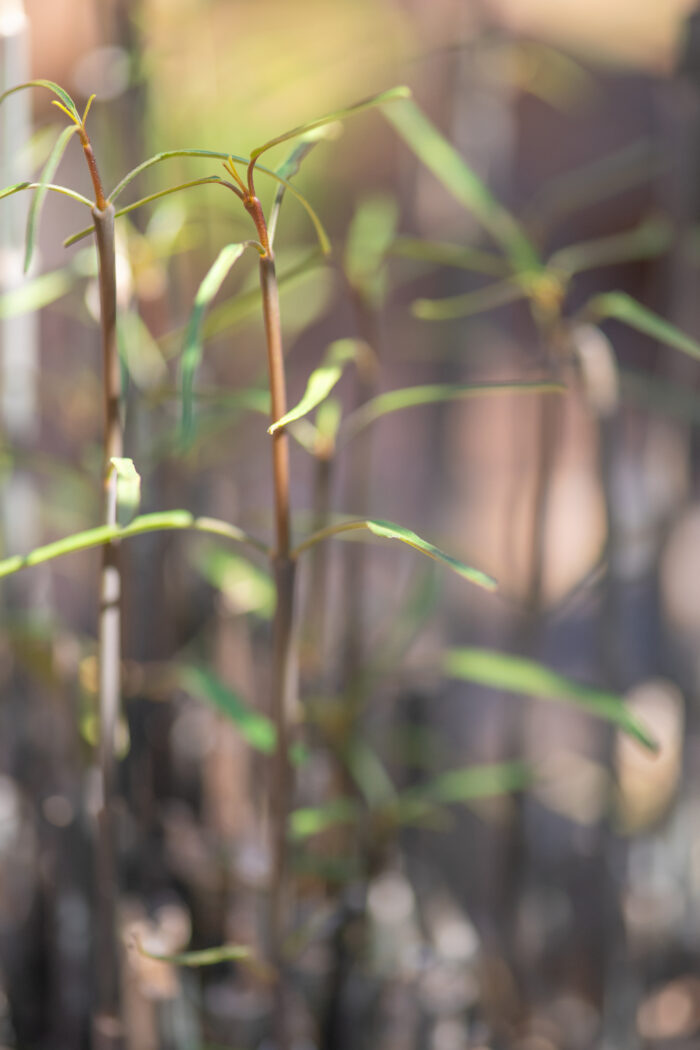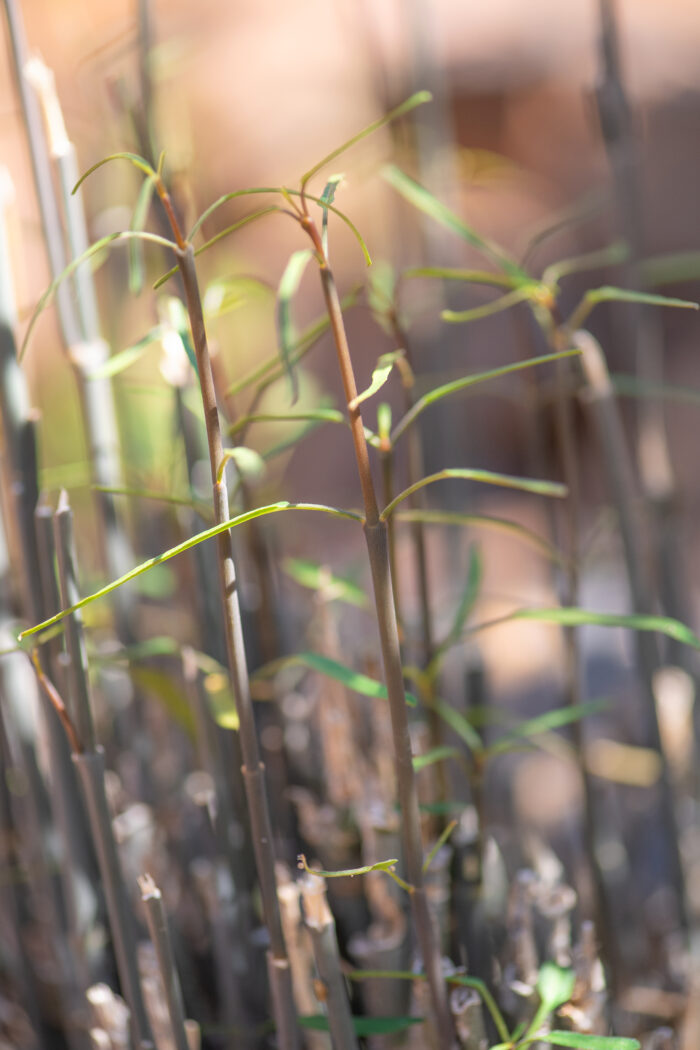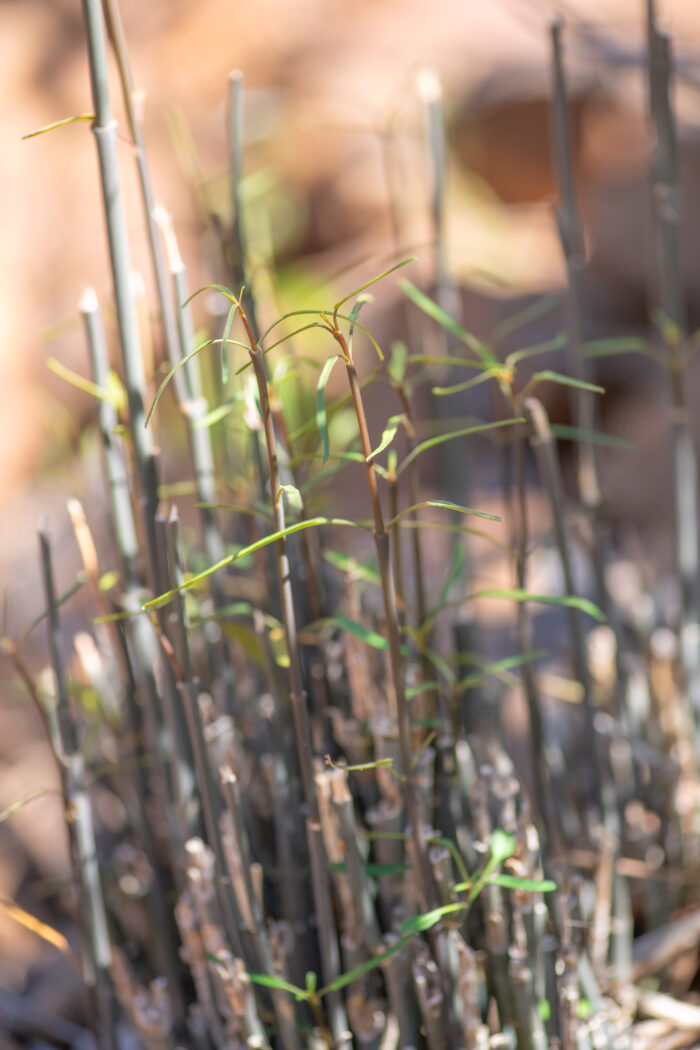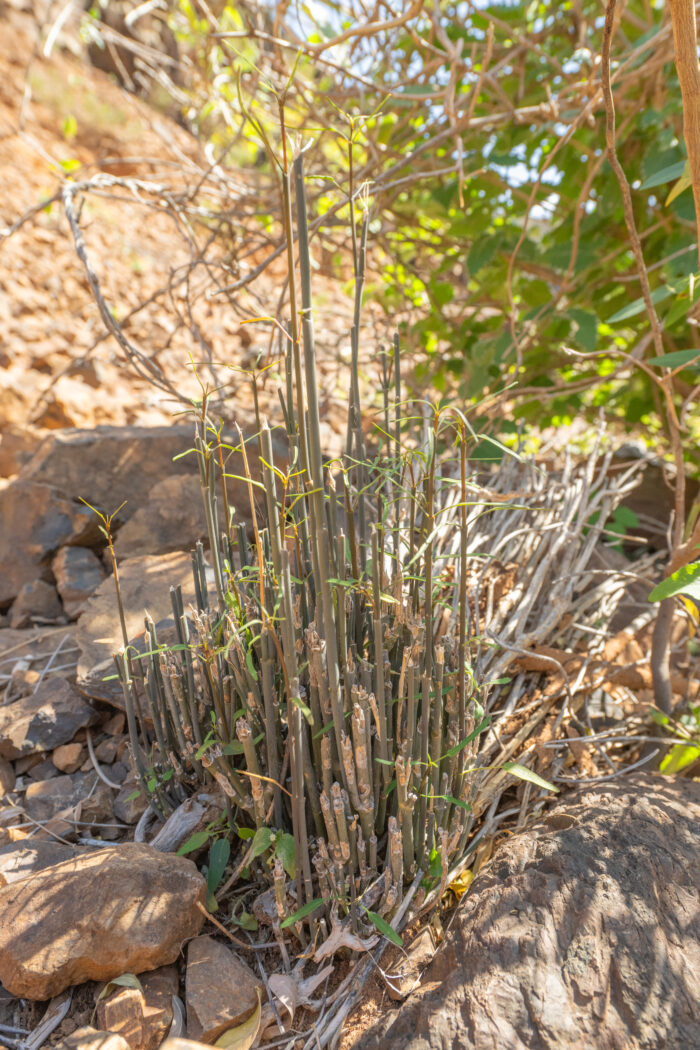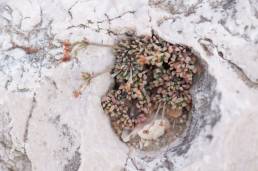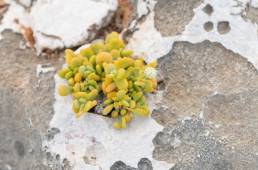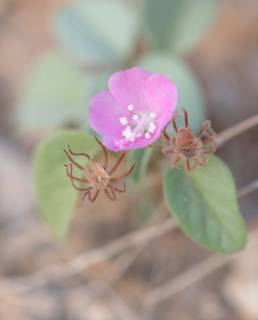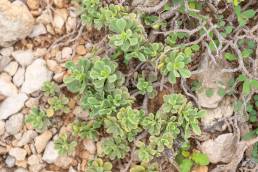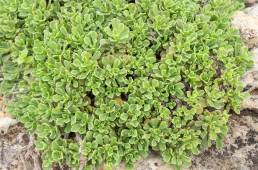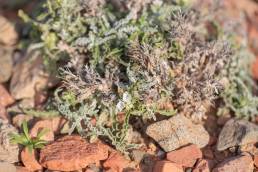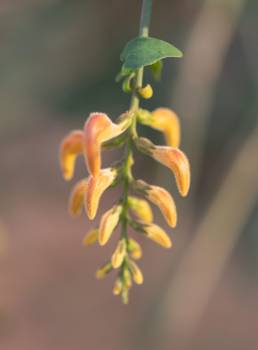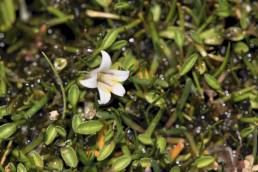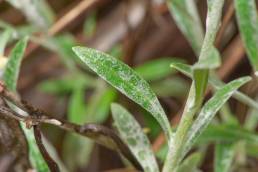This is an inconspicuous plant when not in bloom. This specimen has been hit severely by the insatiable and ever present goats, but has been able to generate new growth after the winter rains. It is now a race against time and available water, as it could be eaten by the goats before it can bloom and set seeds to regenerate.
So far this season the winter rains have ensured plenty of grasses, and it is still ample amounts left. But will it be enough time for it to reach flowering and grow seeds? Highly unlikely, unfortunately. The only way to protect it is by erecting fences around it.
If the goats are not enough the climate change has resulted in extremely destructive cyclones – unheard of here. In 2015 Socotra was hit in succession by cyclones Chapala and Megh that caused extreme destruction, and landslides that destroyed critically endangered species like this one. At this location an entire hillside was buried in rocks and debris, burying several other plants.
Fortunately there are initiatives that aim to save the species, but so far it is unclear as to the viability as many of the endangered species are very hard to unlock when it comes to seed germination. Then there is the issue of pollination and formation of seeds that can germinate.
Endemic.
Elevation: 280 meters.
Details about cyclone Chapala
Details about cyclone Megh
Details about cyclone Mekunu (2018)
Last updated on 20 March 2023

